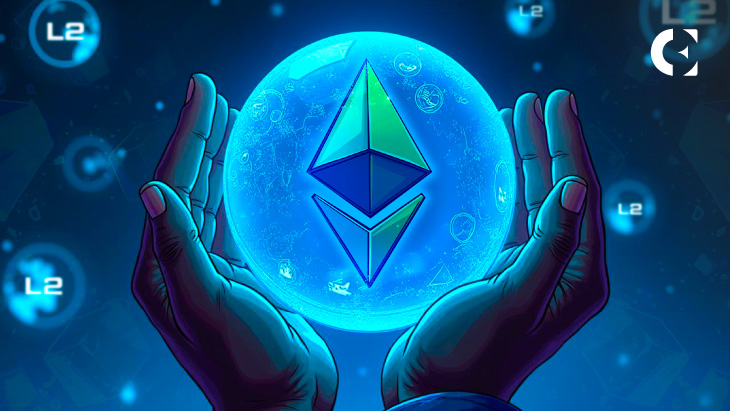
- Layer 2 protocols are central to Ethereum’s scaling and transaction fee reduction.
- Ethereum must address heterogeneity to ensure seamless L2 interoperability.
- Scaling Ethereum requires balancing improvements across both L1 and L2 systems.
Ethereum’s commitment to decentralization and real-world use sets it apart in the blockchain space. But, scaling remains one of its biggest challenges. While Layer 2 (L2) protocols have made major strides, Ethereum faces issues like scalability and the challenges of differences across different chains. To scale Ethereum effectively, a balanced approach that focuses on L1 and L2 improvements is essential.
L2s: The Key to Ethereum’s Scaling Plan
Ethereum’s scaling journey has shifted toward Layer 2 protocols, which now significantly enhance its transaction capacity. As of 2025, L2s have reduced transaction fees by 17 times and have become a core component of Ethereum’s ecosystem.
These advancements in scalability are made possible by a decentralized network of independent entities, each adding to Ethereum’s growth. By scaling through L2s, Ethereum can handle more users and applications, from DeFi platforms to social networks and enterprise solutions. L2s are expected to handle the growing demand for Ethereum’s decentralized applications (dApps) while maintaining security and decentralization.
Related: Vitalik Buterin: Why Ethereum’s Future Depends on Its Culture, Not Just Tech
Dealing with Differences and Coordination Issues
Despite the progress, Ethereum faces two main challenges: scaling capacity and the complexities of having many different systems. The first challenge is the limited space available for L2s and the rising demand for transaction processing. A potential solution involves expanding the blob space on L1, boosting scalability without compromising decentralization.
Also, the coordination of diverse L2s, each using different standards, presents challenges in composability and user experience. These issues require a unified approach, ensuring smooth interoperability between various L2s and maintaining Ethereum’s decentralized spirit.
Related: Ethereum Faces Growing Backlash as Community Support Hits New Lows
Ethereum’s Future: A United and Scalable System
Moving forward, Ethereum must focus on further scaling L1 and L2 systems. This includes speeding up the adoption of EIP-4844 and expanding blob space to accommodate higher transaction volumes.
As Ethereum grows, the ecosystem must also address security and interoperability concerns, making sure that L2s meet the high standards of decentralization and censorship resistance expected of Ethereum. Furthermore, the economics of ETH must be designed to ensure continued value accrual in an L2-heavy world, letting ETH succeed even as L2s dominate Ethereum’s transaction world.
Disclaimer: The information presented in this article is for informational and educational purposes only. The article does not constitute financial advice or advice of any kind. Coin Edition is not responsible for any losses incurred as a result of the utilization of content, products, or services mentioned. Readers are advised to exercise caution before taking any action related to the company.







